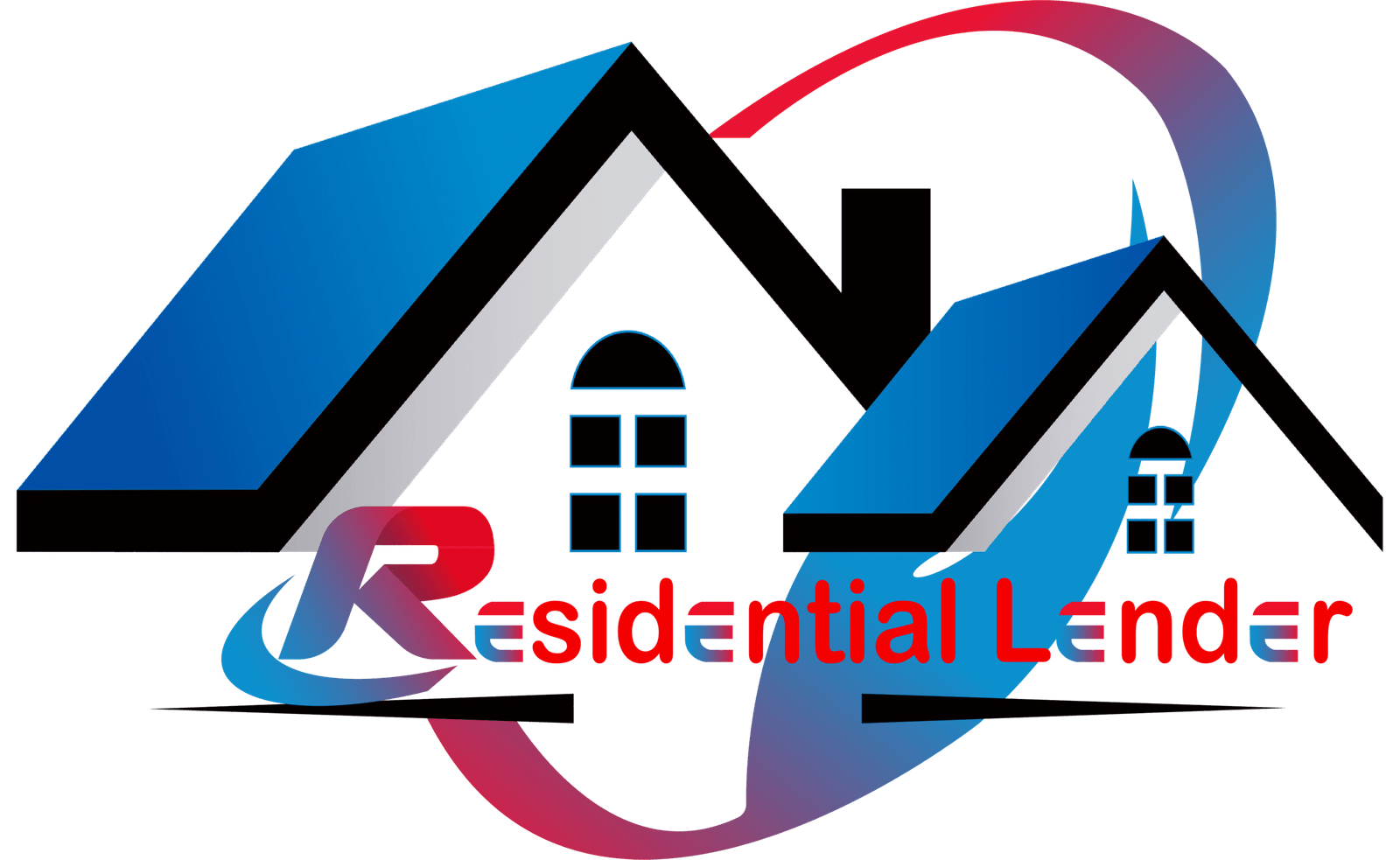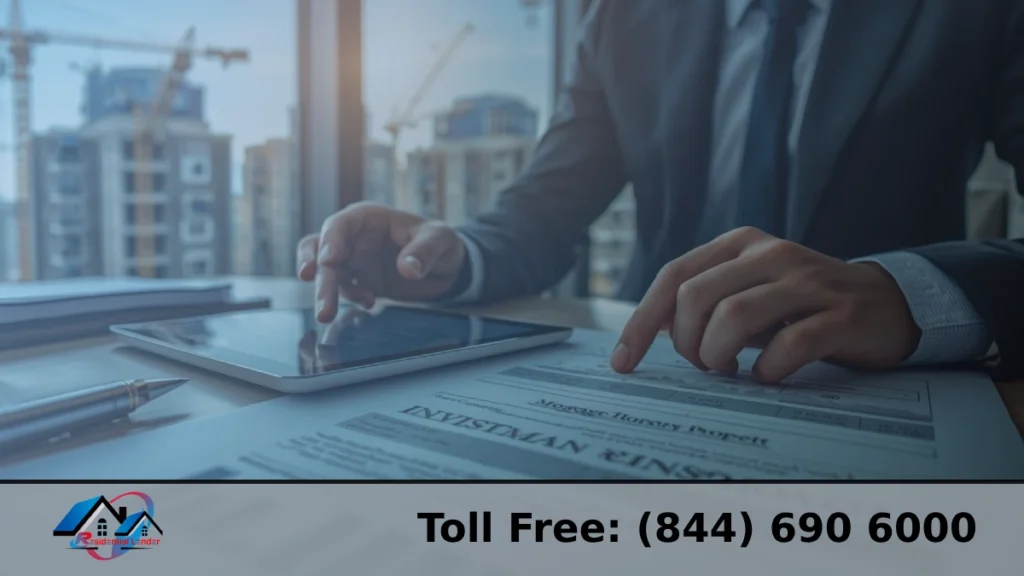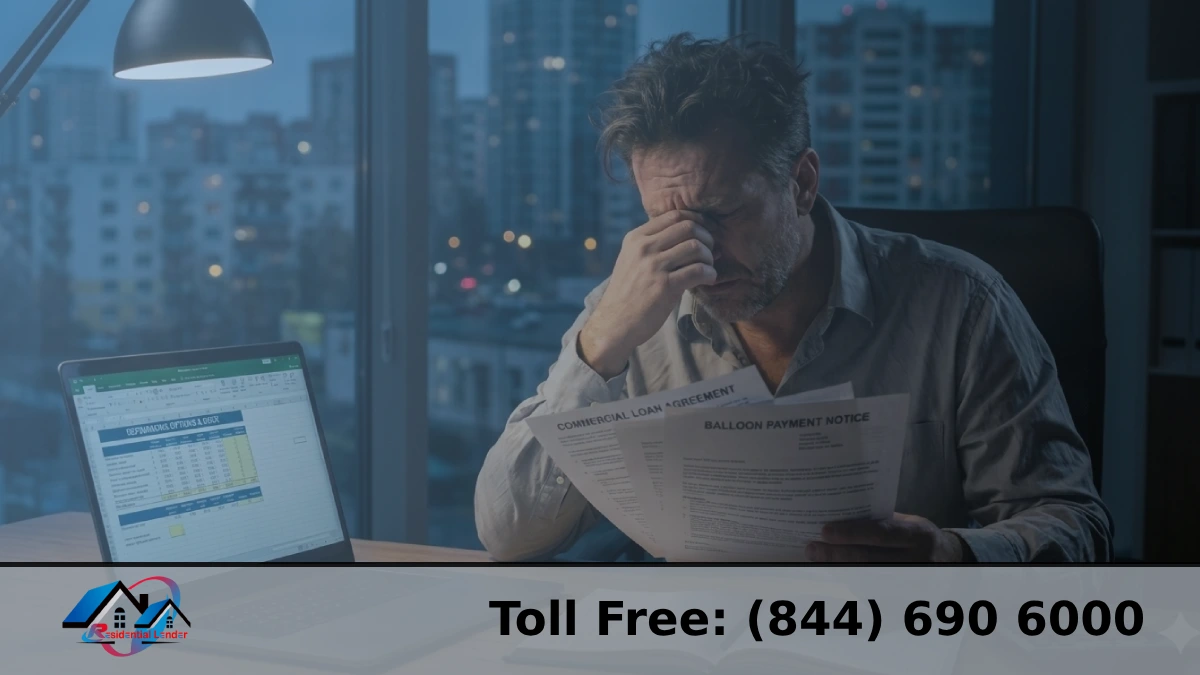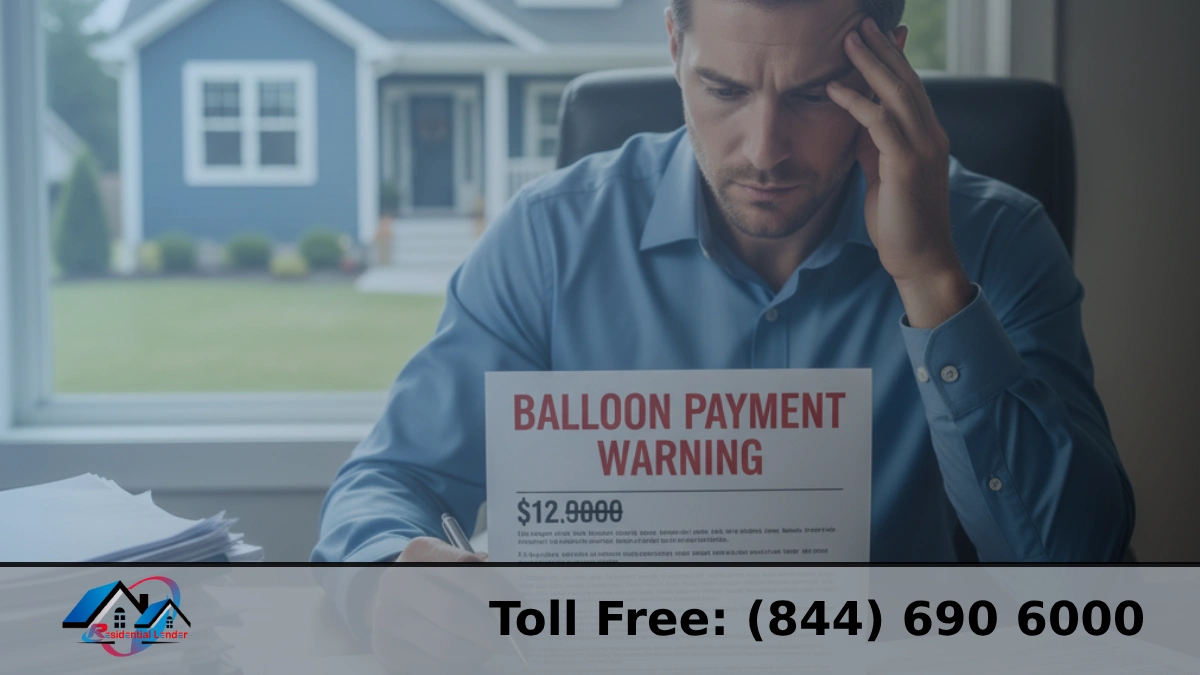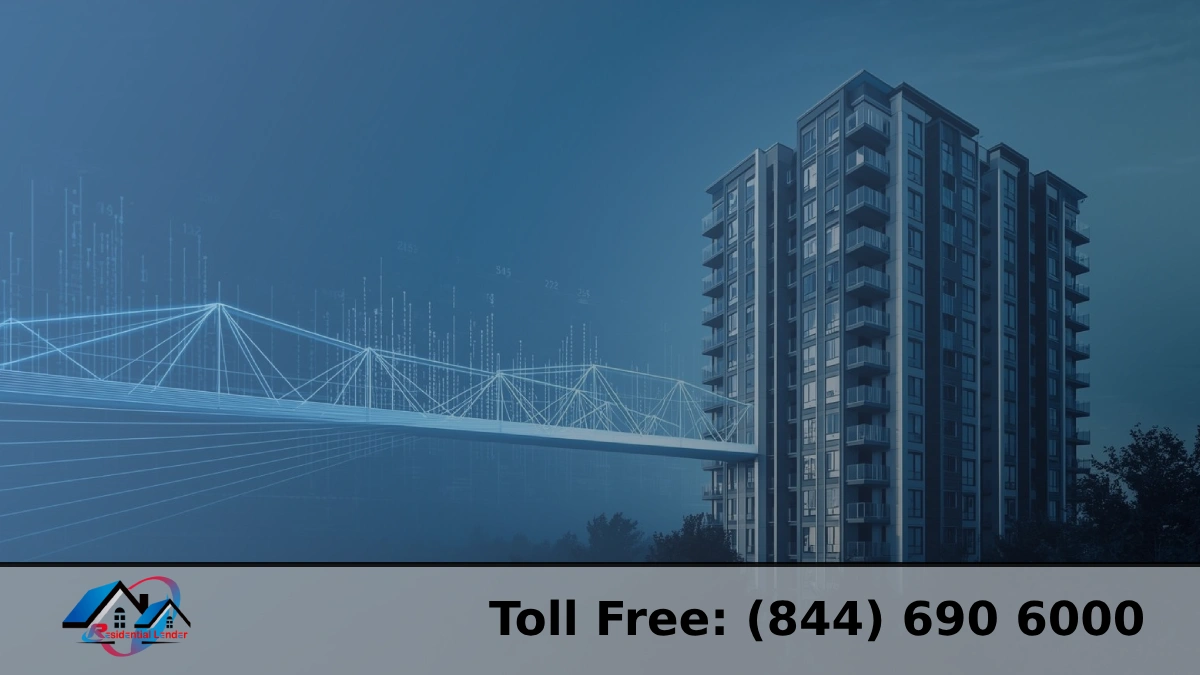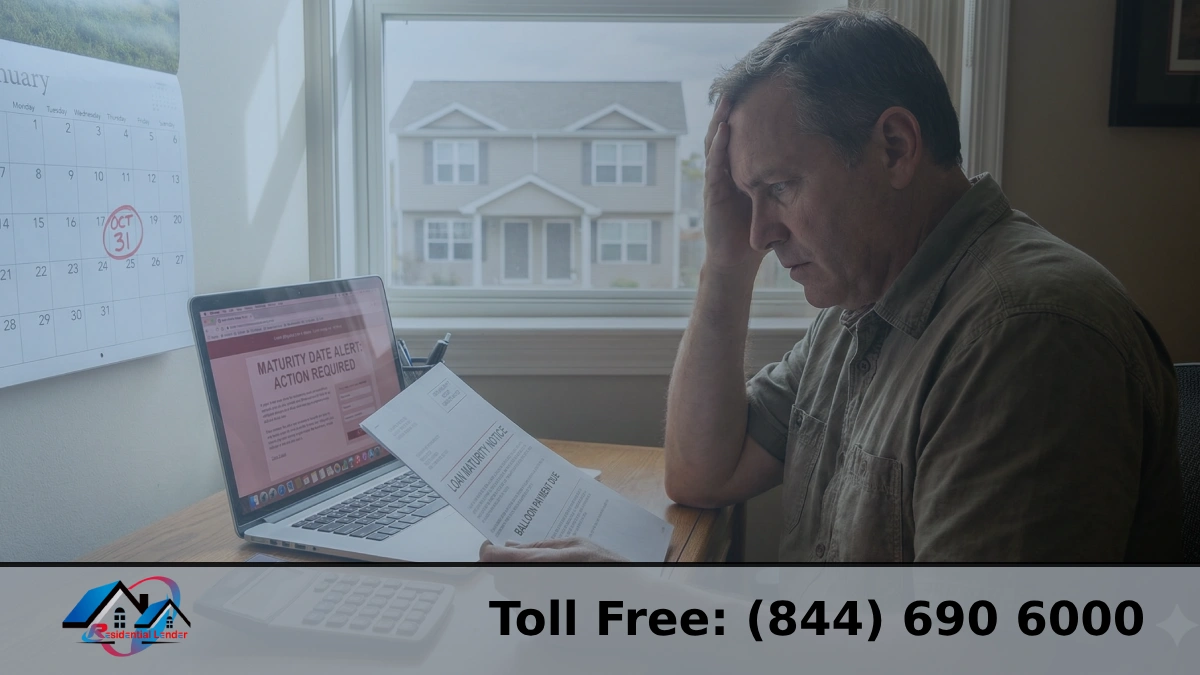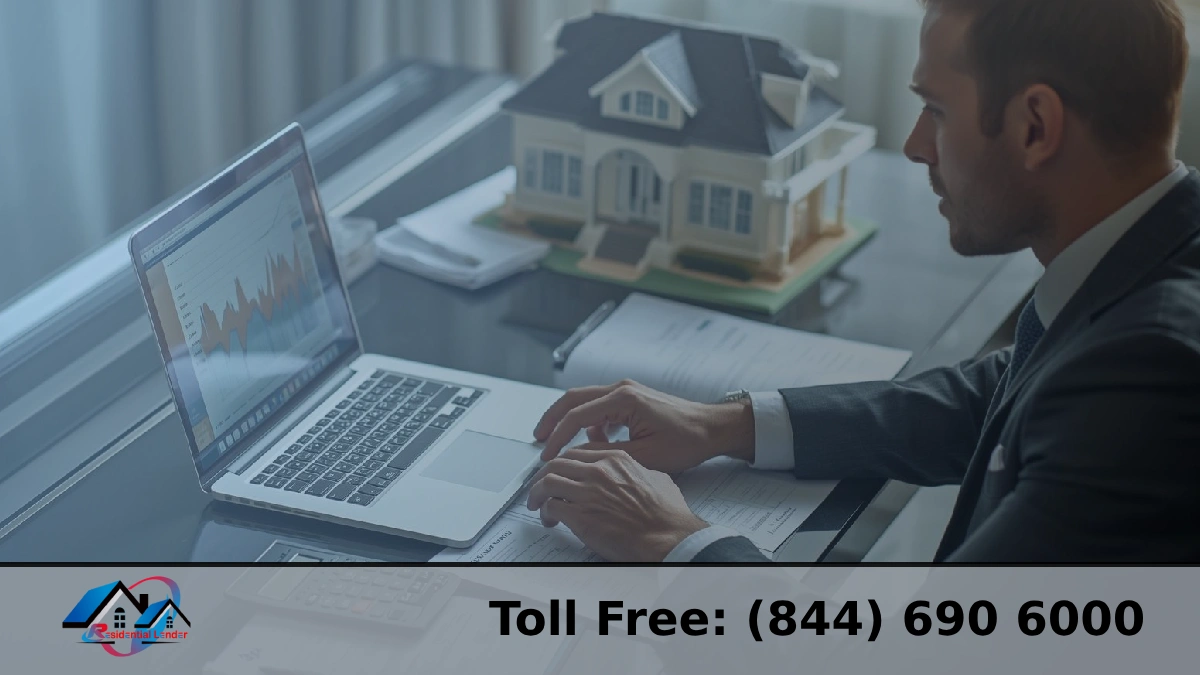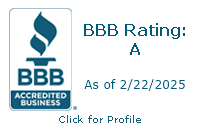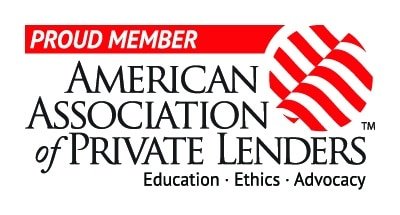Are you ready to dive into real estate but worried about costly blunders? The wrong Investment Property Mortgage decision can sink your profit before you even get a tenant. Choosing the wrong loan is a common first mistake. It can lead to higher payments and lower cash flow. The result? Your path to passive income stops before it even starts.
We are ResidentialLender.Net. We get it. We’ve been in the game for 30 years! We have deep underwriting expertise. Our network includes over 1,000 private lenders, investors, brokers, and realtors. We specialize in making your dream of a residential investment a reality. We’re “table and correspondent lenders.” This means we know the market inside and out. We see the bad loans—and we stop them.
Here’s what we know: The U.S. Census Bureau reports the median price of new homes sold in 2024 has climbed high, making loan decisions even more critical. You must be smart about your Investment Property Mortgage. We’ve boiled decades of experience down to 7 crucial mistakes. Avoid these, and your path to stable, passive income is clear. Skip the errors. Maximize your rental return.
Let’s break down the 7 most common, profit-killing errors people make with their Investment Property Mortgage—the top things to avoid—and show you exactly how you can sidestep them to secure your financial future.
Mistake 1: Confusing Investment Property Mortgage with a Home Loan
The single biggest blunder first-time buyers make is treating an Investment Property Mortgage like the loan for their family home. They are entirely different products. A home loan for a primary residence is low-risk for the lender. People will do almost anything to keep the roof over their family’s head. An investment property, however, is considered a higher risk because if money gets tight, investors are more likely to let the rental go before defaulting on their primary residence. This simple difference dictates everything: the down payment, the interest rate, and your qualification.
Lenders must offset this higher risk. They do this by requiring you to have more skin in the game and charging a higher fee for the money you borrow. By law, they operate under stricter guidelines set by federal agencies. According to industry standards informed by entities such as Fannie Mae and Freddie Mac, Investment Property Mortgage interest rates are typically 0.5% to 1.0% higher than those for owner-occupied homes. You must budget for this extra cost right from the start.
Down Payment Requirements for Investment Property Mortgage: The Big Difference
Expecting the same low down payment as a primary residence is a common, budget-busting surprise.
You need to know this: You can secure a conventional loan for a primary residence with as little as 3% to 5% down. This is thanks to programs designed to promote homeownership. But for an Investment Property Mortgage vs a Primary Residence Mortgage? Forget those low numbers. Lenders require a larger down payment because the property is non-owner-occupied. It is viewed purely as a business venture. The higher your initial equity, the less risk the lender assumes.
For conventional loans on single-family rental properties, the minimum down payment is generally 15%. However, many lenders prefer 20% to 25% to reduce their exposure and avoid requiring costly Private Mortgage Insurance (PMI). On a median-priced investment home, that difference between a 5% and 20% down payment can mean tens of thousands of dollars. Failing to save for this higher upfront cost kills more deals than any other mistake.
Qualifying for Investment Property Mortgage with Low Income: The Income Challenge
Thinking your personal W-2 income is the only thing that matters.
You can have a great job, but if your Debt-to-Income (DTI) ratio is already high, a lender using traditional underwriting might reject your loan. When you’re dealing with an Investment Property Mortgage, your personal W-2 income might not be enough. The good news is, your tenant’s money often matters more than your own!
You don’t always need to rely on your personal tax returns. This is where alternative financing options come into play, most notably the DSCR loan (Debt Service Coverage Ratio). Understanding this is critical for calculating your property’s mortgage payments. The DSCR is a simple ratio: it compares a property’s projected rental income to its total annual debt (principal, interest, taxes, insurance, and HOA fees). Lenders will often approve you based only on the asset’s performance. For example, a DSCR of 1.25 means the property’s income covers its debt service by 125%, proving the asset is a viable, stand-alone business. By focusing on the property’s cash flow rather than your W-2, you can scale your portfolio faster.
Mistake 2: Only Talking to Your Local Bank
Many first-time investors make a critical error: they walk into the familiar branch of their local retail bank. This is comfortable, but it can be financially disastrous. Your retail bank is not optimized for your business. They offer products designed for low-risk, W-2 borrowers seeking a primary residence mortgage. When you ask for an Investment Property Mortgage, they usually just give you a “take it or leave it” loan with a high rate.
Pain: Settling for your retail bank’s high rate out of convenience can easily cost you tens of thousands over the life of the loan.
Why? Retail banks are often slow. They have high overhead from all those physical branches and tend to keep most loans on their own balance sheet. They are restricted by their own internal policies. This inflexibility costs you money. When you look for the best mortgage rates for rental properties, you need to talk to a correspondent lender like us. We shop your loan around. We work with a network of over 1,000 private lenders and institutional investors. According to industry analysis, this type of specialized mortgage lender can often offer rates 0.25% to 0.875% lower than a typical retail bank, especially for non-standard investor deals. That difference can put thousands back into your cash flow every year.
Finding the Best Mortgage Rates for Rental Properties
As a correspondent lender, we originate and fund the loan ourselves. Still, we adhere to the standards of the entire secondary market. This gives us immense control. We are not restricted to one set of policies. We offer direct transaction control and access to a broader range of specialized products. If one lender’s guidelines are too strict, we move to the next until we find the best fit and rate for you. This competitive shopping process is how serious investors secure their deals and achieve optimal profit margins.
Why You Need Investment Property Mortgage Lenders No Income Verification
Traditional lenders struggle with self-employed investors who own multiple businesses or simply use aggressive tax write-offs. These investors may look “poor” on paper but have strong cash flow.
This is why specialized, non-Qualified Mortgage (Non-QM) options are vital. These loans are offered by Investment Property Mortgage Lenders with No Income Verification. They are perfect for portfolio builders and entrepreneurs. They allow you to qualify based on liquid assets or the rental property’s cash flow, not just your tax returns. This saves time and hassle.
| Loan Option Highlight | Investor Profile | Benefit |
| DSCR Loans | Property-centric Investors | Qualify solely on the property’s rental income. |
| Bank Statement Loans | Self-Employed Individuals | Use 12–24 months of business deposits to prove income. |
| Asset-Depletion Loans | Retirees/High Net Worth | Qualify based on verified liquid assets, like stocks. |
For many savvy, self-employed investors, using a specialized lender for a Lite-doc or Bank Statement Loan is the only way to keep their investment momentum going strong. Don’t let your local branch limit your financial growth.
Mistake 3: Choosing the Wrong Loan Type for Your Strategy
Many investors make a costly mistake by using a 30-year fixed loan when they only need a 6-month loan. Your financial strategy—whether you plan to flip or hold a property—must dictate your financing choice. If you pick the wrong tool, the costs will erase your profit.
Using a long-term Investment Property Mortgage for a fix-and-flip property is too slow and too costly, with high fees. You need speed and flexibility in those situations.
The goal is to match the product to the timeline.
Bridge Loans and Hard Money Loans: Short-Term Investment Property Mortgage Solutions
If your strategy involves a quick turnaround, such as fixing and selling a neglected home, you need fast, specialized capital. This is where Bridge Loans and Hard Money Loans shine. These are short-term solutions (typically 6 to 18 months). They fund quickly because they are primarily secured by the value of the property, not your personal credit.
| Loan Type | Typical Interest Rate Range | Primary Use |
| Fixed-Rate Mortgage | 6.5% – 8.0% | Long-term renting (hold) |
| Hard Money Loan | 9.25% – 15% | Short-term fixing and selling (flip) |
While the interest rates on Hard Money Loans are much higher (often ranging from 9% to 15%), they are ideal for a fix-and-flip. Why? They close in days, not months. You only pay the high rate for a short time. This speed lets you beat cash buyers to the deal. A hard money loan is not suitable for a 10-year rental strategy, but it is ideal for a 6-month renovation.
Commercial Mortgage for Investment Property vs. Residential Investment Property Mortgage
You must know the difference between these two financing categories. The unit count of your property determines which category you fall into, impacting rates and regulations.
- Residential Investment Property Mortgage: This applies to properties with one to four units (e.g., single-family homes, duplexes, triplexes, or fourplexes). These loans are generally backed by government-sponsored entities like Fannie Mae and Freddie Mac. They have standardized rates and terms. Many investors start with FHA multifamily property investment loans for 2-4 unit properties, as these loans often follow residential guidelines.
- Commercial Mortgage for Investment Property: This applies to rental properties with 5 or more units (such as apartment complexes). It also covers mixed-use properties (retail on the ground floor, apartments on the upper floors). These loans have different terms, require higher down payments (often 25%–35%), and typically reset after 5 to 10 years.
If you mistakenly finance a 5-unit building using residential paperwork, the loan will fail underwriting. Suppose you are building a large portfolio mortgage for investment properties. In that case, you must understand the commercial side of lending for multi-family assets.
Fixed vs Adjustable Rate Investment Property Mortgage: The Rate Risk
When you finance a buy-and-hold rental, you face a choice: Fixed vs Adjustable Rate Investment Property Mortgage.
- Fixed-Rate: Offers security and predictability. Your principal and interest payment never changes. This is ideal for a long-term rental strategy where predictable monthly cash flow is your top priority.
- Adjustable-Rate Mortgage (ARM): Starts with a lower rate for an introductory period (e.g., 5 or 7 years). After that, the rate adjusts annually based on a financial index. This is riskier but can be a smart move if you plan to sell or refinance before the fixed period ends. Many investors use a 7/1 ARM to save on interest initially, with the plan to pull their cash out through a refinance once the property is stabilized.
Mistake 4: Skipping Financial Due Diligence
The fatal flaw for many beginner investors is relying on “gut feelings” instead of proven financial models. They assume the rent will cover the cost, but they fail to account for the total financial picture. Suppose you focus only on the interest rate of your Investment Property Mortgage. In that case, you are missing the crucial details that determine long-term success.
The Problem: Focusing only on P&I (Principal & Interest) and being shocked when the real-world expenses arrive.
We have seen countless deals crumble because the investor only checked two numbers. A comprehensive cash flow analysis is the only way to avoid this. With our 30 years of underwriting experience, we help you run the numbers correctly before you commit. We look at the whole picture: PITI (Principal, Interest, Taxes, and Insurance), plus critical costs like maintenance, property management, and vacancy.
Underestimating Total Costs of Ownership and Calculating Mortgage Payments
When calculating mortgage payments for investment property, you must include all ownership costs. These costs vary widely by location. For example, property taxes across the U.S. range significantly. New Jersey has an effective property tax rate of around 1.77%, while Hawaii has a rate as low as 0.32%. This difference alone can shift your cash flow from positive to negative.
More importantly, never assume 100% occupancy. The U.S. Census Bureau reported the national rental vacancy rate to be around 7.0% in the second quarter of 2025. This means you must budget for one month of vacancy every 1.5 years.
Finally, remember the tax benefits. The interest you pay on your Investment Property Mortgage is generally deductible as a business expense. The tax implications of investment property mortgage interest are a huge factor. Still, you only benefit if your due diligence is complete.
The Hidden Value in Refinance Investment Property Mortgage Cash Out
Savvy investors understand that equity is passive capital. If it is locked in your home, it is not helping you grow. This mistake is missing out on the opportunity to use built-up equity to scale your portfolio quickly.
Once your rental property has appreciated and stabilized—often after a few years—you can execute a Refinance Investment Property Mortgage Cash Out. This financial maneuver replaces your existing loan with a larger one, giving you the difference in tax-free cash.
Here’s how it works:
- Property A is valued at $400,000, and you owe $200,000. You have $200,000 in equity.
- You get a new $300,000 loan (75% LTV) to pay off the old loan.
- You receive $100,000 cash at closing.
- You use that $100,000 for the down payment on Property B.
This strategy, sometimes called the “BRRRR” method (Buy, Rehab, Rent, Refinance, Repeat), is how investors use one property to buy the next, accelerating their path to building a massive portfolio without constantly waiting to save up new capital.
Mistake 5: Not Considering the Owner-Occupied Loophole
One of the greatest mistakes for first-time real estate investors is bypassing the strategy known as house hacking. They assume every rental deal requires a massive, 20-25% down payment. This isn’t true if you are willing to live in the property. By using the owner-occupied loophole, you can access financing terms far superior to those for primary residences.
Thinking you need a massive down payment for a duplex or triplex when you could use lower-cost financing intended for your first home. This misses a golden opportunity for a first-time home buyer investment property mortgage.
The key rule is this: For a 1-to-4 unit property, if you commit to living in one of the units as your primary residence for at least 12 months, the entire property qualifies for owner-occupied financing.
Pros and Cons of Owner-Occupied Investment Property Mortgage Strategy
This strategy unlocks significant financial advantages that pure non-owner-occupied Investment Property Mortgage loans simply do not offer.
| Pros of Owner-Occupied Strategy | Cons of Owner-Occupied Strategy |
| Lower Down Payment: FHA loans allow as little as 3.5% down for properties up to four units (assuming a credit score of 580+). This drastically cuts your cash outlay. | Less Privacy: You live in close proximity to your tenants, blurring the lines between home and business. |
| Lower Interest Rates: Owner-occupied loans are viewed as lower-risk by lenders, resulting in better interest rates and closing costs than conventional investor financing. | Occupancy Requirement: You must commit to living in one unit for a minimum of 12 months to avoid loan fraud. |
| Rental Income to Qualify: Up to 75% of the projected rental income from the non-occupied units can be used to help you qualify for the loan. | Landlord Role: You are the on-site property manager, responsible for maintenance and tenant conflicts at all hours. |
By committing to this owner-occupied investment property mortgage path, you get paid to live in your own house, while your tenants cover the mortgage. It is the most accessible way to jumpstart a successful real estate portfolio.
Mistake 6: Forgetting About the Second Home Distinction
A typical financial misstep is trying to qualify a full-time rental property as a “second home” just to gain a financing advantage. While the rates and down payments are more favorable, this practice poses a significant risk that borders on loan fraud if the intent is purely to generate income.
Trying to qualify an actual rental as a “second home” to get a lower rate, and running into legal and loan fraud risks. The distinction is strict.
The core difference is simple: intent and occupancy. A second home is primarily for your use and enjoyment. An investment property is for income. Lenders use specific guidelines set by Fannie Mae to determine which category your property falls into.
How to Get a Mortgage for a Second Home vs. an Investment Property
If you want to get a mortgage for a second home, you must meet strict occupancy requirements. The rules are designed to prevent investors from cheating the system to get better terms.
| Mortgage Type | Minimum Down Payment | Typical Interest Rate | Occupancy Requirement | Unit Limit |
| Second Home | 10% | Lower (closer to primary residence rate) | Owner must occupy for a portion of the year. | Single-Unit only. |
| Investment Property | 15%−25% | Higher (risk-adjusted) | No owner occupancy required. | Up to 4 units. |
The financing differences are apparent. A second home requires a minimum down payment of 10% and generally offers a lower rate than a pure investment loan. However, there are significant restrictions:
- Rental Limit: You typically cannot rent a second home out for more than 180 days per year.
- Proximity Rule: To be considered a second home, the property must typically be a significant distance from your primary residence (often 50 miles or more).
Suppose your plan is to rent the property for 365 days a year to maximize income. In that case, you must secure an Investment Property Mortgage with a higher down payment. Trying to game the system with a false second-home application is a costly form of occupancy fraud that can result in the lender calling the entire loan due. Smart investing means choosing the correct, legal loan product for your exact rental strategy.
Mistake 7: Going Solo: Not Partnering with a Full-Service Lender
The final and most critical mistake is believing you can navigate the complex, multi-layered world of real estate debt on your own. Investors try to match a specialized loan to a complex deal using only their local bank’s limited offerings. The result? They waste months or lose the deal entirely.
The Problem: Trying to navigate the complexity of specialized products like DSCR loans, SBA loans, or mixed-use financing without expert guidance.
The Power of a Correspondent Lender for Your Investment Property Mortgage
We are ResidentialLender.Net. We don’t just process paperwork; we serve as your financial consultant. Our 30 years of underwriting expertise mean we know the lending landscape inside and out. We are “table and correspondent lenders,” giving you the speed of a direct lender combined with the flexibility of a broker. We specialize in non-traditional scenarios that local banks reject, such as:
- DSCR Loans: Qualifying solely on the property’s projected rent, not your personal income.
- SBA 504 Loans: Providing long-term, fixed-rate financing for owner-occupied commercial real estate, which is crucial for mixed-use properties (where at least 51% is owner-occupied). The average SBA 504 loan size exceeds $1.14 million, underscoring its importance for large projects.
- Fix-and-Flip Loans: Offering rapid, short-term financing that closes faster than any retail bank can manage.
We guide your financial strategy to find the exact Investment Property Mortgage that fits your timeline and risk tolerance, saving you time and maximizing your profit.
Exclusive and Non-Exclusive Referral Programs for Brokers and Realtors
Our value proposition extends directly to our referral network. For brokers and realtors, we are the reliable partner who closes deals others can’t. We offer lucrative, transparent referral programs for referring clients who need specialized financing, including:
- Complex Deals: Loans for fix-and-flip projects, mixed-use buildings, and multifamily properties (5+ units) that fall outside conventional guidelines.
- DSCR and Lite-Doc: We offer options for self-employed clients who need an Investment Property Mortgage without having to provide complex tax returns.
We support both experienced brokers and newcomers, ensuring quick payouts and a streamlined process. By partnering with us, you can trust that your clients will secure the specialized capital they need to grow their portfolios, strengthening your professional relationship and your commission potential. We help you close more challenging transactions, turning difficult leads into lifelong clients.
Conclusion
We have uncovered the 7 critical mistakes that block your real estate success. You now know that confusing a regular home loan with an Investment Property Mortgage is an expensive error. You realize that relying solely on your local bank can cost you tens of thousands in higher rates. Furthermore, you understand the need to match your loan type—whether a short-term bridge loan or a long-term fixed-rate loan—to your specific investment strategy. Avoiding these profit-sinks is the fastest way to build a robust portfolio of income-generating properties that provide reliable cash flow.
Securing the right capital for your investment is not guesswork; it’s a detailed science. From specialized construction loans and long-term loans to rapid hard money and streamlined DSCR options, ResidentialLender.Net has the products and the 30 years of underwriting knowledge to secure your ideal Investment Property Mortgage. We are the table and correspondent lender that simplifies complexity, making sophisticated deals accessible. Our expertise is your shield against common, costly blunders.
Stop guessing and start profiting. The information is clear: precision in financing is non-negotiable for success. Don’t let a simple mistake cost you thousands in missed equity or inflated interest payments.
Ready to finance your next Investment Property Mortgage—whether it’s a house-hack, a fix-and-hold rental, or a multi-family unit? Contact ResidentialLender.Net today for a free, no-obligation consultation. Let our expertise be your advantage. Call us or fill out our online form now! Your path to real estate wealth begins with the right financing partner.
FAQs
1. What are the significant tax advantages of an Investment Property Mortgage compared to a Primary Residence loan?
The main advantage is the ability to deduct business expenses. For a primary residence, you can generally only deduct mortgage interest (subject to limits) and property taxes (subject to the $10,000 SALT cap). For an investment property, the mortgage interest and property taxes are fully deductible business expenses against the rental income. Furthermore, you can deduct expenses like maintenance, insurance, and, most importantly, you can claim depreciation, which is a non-cash deduction that lowers your taxable income without impacting your monthly cash flow.
2. Can a first-time home buyer use a Conventional Loan to purchase a duplex or fourplex?
Yes, a first-time home buyer can use a conventional loan for a duplex (2-unit) or a fourplex (4-unit) as an investment, provided they follow the owner-occupied rules. For a traditional loan on a 2-unit property, the minimum down payment is typically 15% (higher than the 3% for a single-family primary residence). However, it is still lower than the 25% often required for non-owner-occupied investment properties. The buyer must live in one unit for at least one year.
3. What is a Portfolio Loan for investment properties, and who is it best for?
A Portfolio Loan is a mortgage that the lender keeps “in-house” on its own balance sheet rather than selling it to secondary-market investors like Fannie Mae. This gives the lender the flexibility to set their own underwriting criteria, making these loans ideal for:
- Investors with complex finances (e.g., self-employed with high write-offs).
- Borrowers who own many properties (since conventional loans limit the number of financed properties to 10).
- Properties that don’t fit conventional standards (e.g., those needing heavy renovation or unique mixed-use types).
Portfolio loans can offer flexible terms but typically come with slightly higher interest rates than conforming loans to offset the lender’s added risk.
4. How can I avoid Private Mortgage Insurance (PMI) on a standard Investment Property Mortgage?
For an investment property, you can avoid paying PMI by making a down payment of at least 20% of the property’s purchase price for a conventional loan on a single-family home. For multifamily (2-4 unit) investment properties, lenders usually require a higher down payment — often 25% or more — to avoid mortgage insurance and qualify for the best terms, as these assets are viewed as higher risk.
5. What are the typical loan terms and amortization periods for DSCR loans?
DSCR Loans (Debt Service Coverage Ratio) are typically structured as 30-year fixed-rate mortgages. This is the most common term, offering stable monthly payments. However, many lenders also offer a popular option: a 30-year amortization with an initial interest-only period (often 5 to 10 years). This interest-only period allows investors to maximize their monthly cash flow at the start of the investment, making it easier to cover initial operating expenses or save capital for the next down payment.
